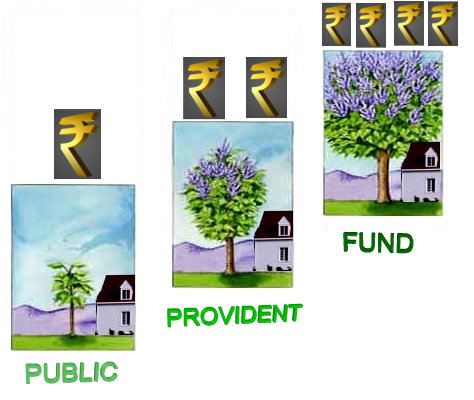Public Provident Fund (PPF) – Things To Know Before Investing.
If you are looking for a long term investment, which is not only safe but also offers growth with added advantage of being tax free then, Public provident fund (PPF) is the best option available to you. Public Provident Fund (PPF) is one of the most popular tax-saving schemes, which can be opened in a post office or designated bank branches.
Following are the key features of PPF which you must know before you plan to invest in this scheme.
Q. Who can invest in this scheme?
A. An individual whether salaried or self-employed or engaged in any other activity can open a PPF account.
Q. What is the duration of investment in PPF or maturity period of PPF?
A. PPF is a long term investment avenue with maturity period of 15 years. In addition you can extend the tenure in blocks of five years after maturity. The balance continues to earn interest at the normal rate. The minimum investment of Rs. 500 has to be maintained even for accounts extended beyond 15 years.
Q. Can I withdraw in between in case of emergency?
A. Yes, if you need money, you can withdraw after the 6th year, but it cannot exceed 50% of the balance at the end of 4th year, or the immediate preceding year, whichever is lower.
You can also withdraw only once in a financial year.
Q. Can I take a loan against my deposit in PPF?
A. Yes, you can also take a loan against it, but this cannot exceed 25% of the balance in the preceding year. The loan is charged at 2% till 36 months, and 6% for longer tenures. Till a loan is repaid, you can’t take more loans.
Q. How much is the interest do I get on PPF deposit?
The interest rate offered on the PPF is not fixed, but linked to the market. It is 0.25% above the 10-year government bond yield. It will be announced every year in April, based on the average bond yield in the previous year. For the current financial year, it is 8.7%, but could recede next year. Rates will differ as per the performance of bonds or in short the economy as a whole.
The interest rate pattern for last few years been as under:
Financial Year PPF Interest Rate
2011-12 8.6%
2012-13 8.8%
2013-14 8.7%
Q. How does the interest calculated?
A. The interest on your PPF balance is compounded annually, but the calculation is done every month. The interest is calculated on the lowest balance between the 5th and last day of every month.
So, it is advised to invest before the 5th, the contribution will earn interest for that month too. Otherwise, it’s like an interest-free loan to the government for a month.
If you are investing through a cheque, make sure you deposit it 3-4 days before the cut-off date. Try depositing cash if possible or through online bank transfer.
Q. What are the tax benefits?
The PPF corpus is not only tax-free but also eligible for tax deduction under Section 80C. The interest earned is also tax-free, and so are withdrawals.
There have been proposals in Direct Tax Code (DTC) to withdraw the tax benefits with prospective effect. However the same was axed in revised DTC. So make the most of this option before the rules become unfavorable.
Q. How much can you invest and what is the minimum and maximum limit?
The investment limit is Rs. 1 lakh in a year through a maximum of 12 instalments. If your minor child has a PPF account, the combined limit for both accounts will be Rs. 1 lakh.
Don’t invest more than the Rs. 1 lakh in a year, because if it is discovered, any interest earned by the excess amount will be reversed. In short there is no interest on excess deposit over Rs.1 lakh.
The minimum investment required is at least Rs. 500 in his PPF account in a year. You will be levied a small, but irksome, penalty of Rs. 50 if you fail to do so.






